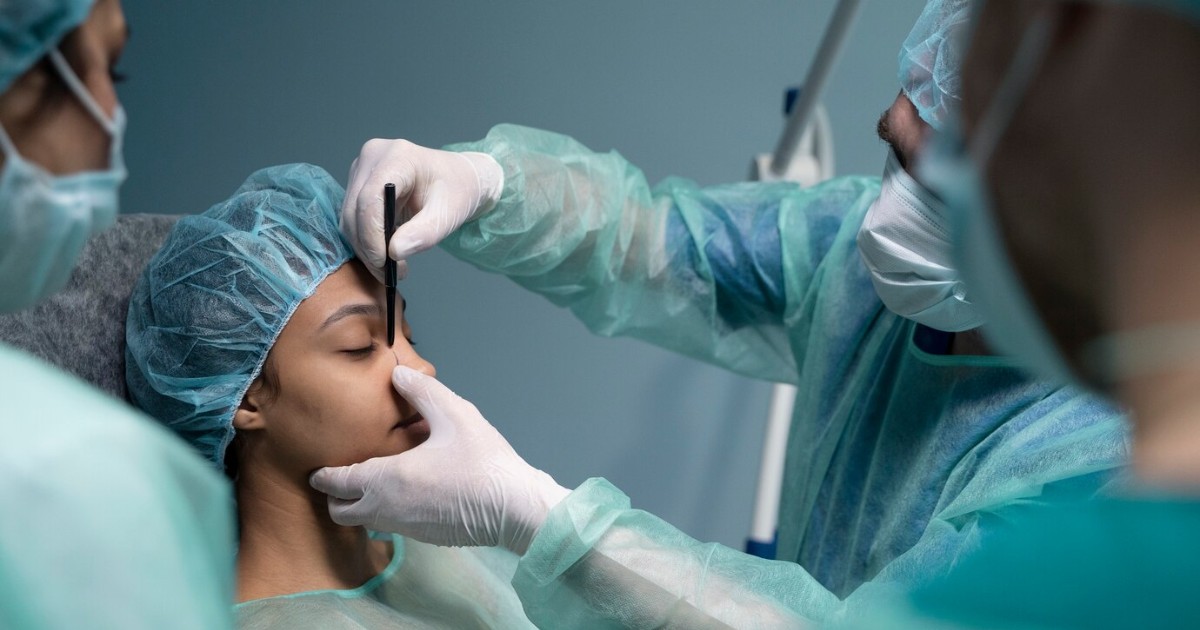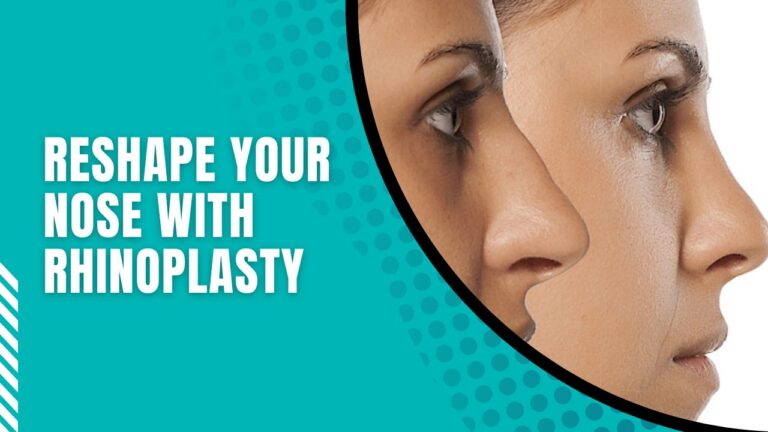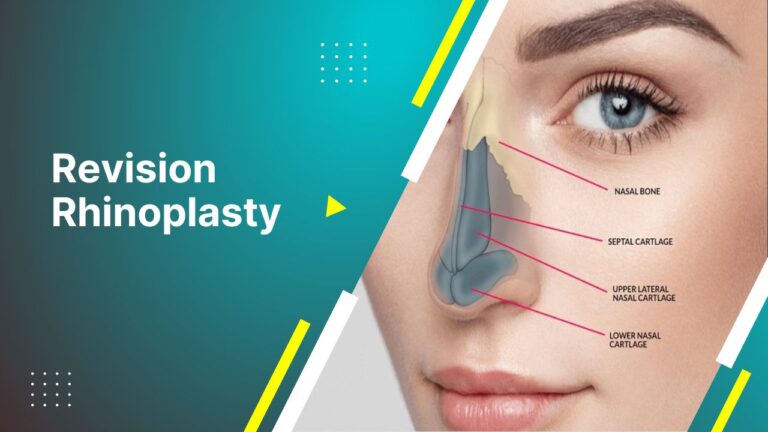Rhinoplasty is a surgical procedure for fixing the nose. The procedure has widely gained recognition recently.
Rhinoplasty procedures can be both cosmetic, to align the nose with the patient’s desired look, and corrective, to fix issues from injury or to improve breathing.
What is Rhinoplasty Surgery?
Rhinoplasty surgery, widely known as nose job, is a plastic surgery procedure to reshape or resize the nose. It can address concerns about the size, shape, bridge, tip, nostrils, or overall nose proportion to create facial harmony.
- Rhinoplasty can alter the size, shape, bridge, nostrils, tip, or angle of the nose.
- It can correct birth defects, breathing issues, or injuries
- An open or closed surgical approach may be used depending on the needs
- It is usually done under general anaesthesia and takes 1-2 hours
- Recovery time is 1-2 weeks, with swelling subsiding over several months
- Most patients are happy with improved appearance, proportions and breathing
- Risks include scarring, bleeding, infection, asymmetry, and need for revision
What exactly is a nose job?
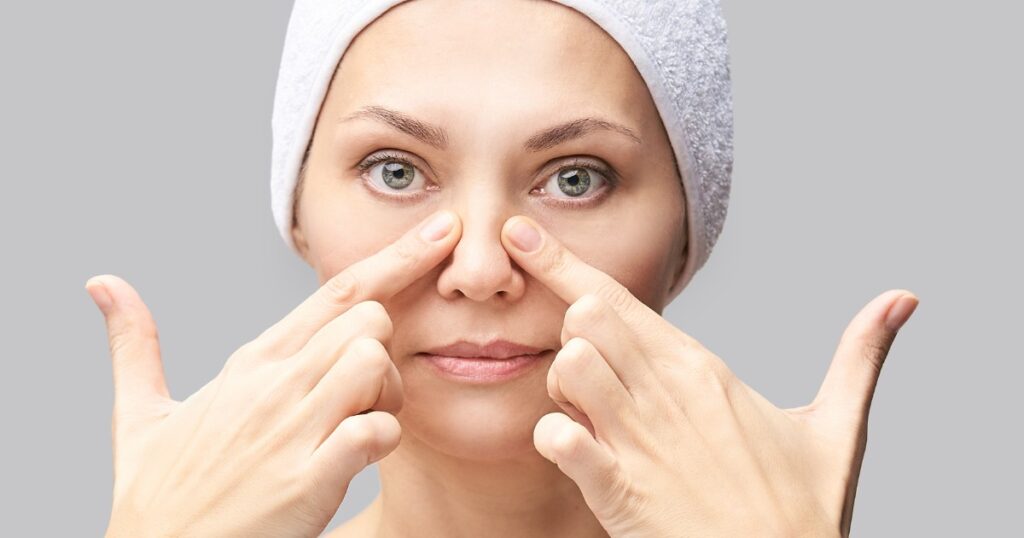
Nose job is a widely used term when Rhinoplasty is performed for cosmetic reasons.
In a nose job, the surgeon meticulously sculpts the nasal framework to achieve the patient’s specific goals. This may involve resizing, reshaping, or adjusting the nostrils, nasal tip, or bridge.
Book A Consultation With Dr Tarek Bayazid
Top-rated Plastic Surgeon For Rhinoplasty in Dubai
Installment Plan Available
Each surgical plan is personalised, taking into account the individual’s unique facial features and inherent nasal anatomy to ensure natural-looking results that harmonise with the patient’s overall facial aesthetics.
- Reshapes bone, cartilage and soft tissue to alter shape and size
- Can make the nose smaller, narrower, straighter, or more defined
- Refines the tip, bridge, nostrils, angles, or unevenness
- Improves nasal proportions to create facial harmony
- Addresses cosmetic concerns or birth defects
What is the process of getting a nose job?
The nose job process involves consultation, pre-op preparation, surgery, and recovery. It starts with choosing a skilled surgeon and discussing goals. Preparation may include exams, photos, and instructions. During surgery, incisions are made to reshape structures. Swelling subsides over weeks of recovery.
- Initial consultation to evaluate concerns and goals
- Medical history and exam to assess health and anatomy
- Photos taken of the nose from all angles to plan changes
- Options discussed, such as open or closed approach
- Pre-op steps like lab tests, medication adjustments
- Rhinoplasty surgery lasting 1-2 hours under anaesthesia
- Splint is worn for 1 week to protect the new structure
- Swelling and bruising peaks in 2-3 days and fades over weeks
- Post-op appointments to monitor healing and results
How long does swelling last after rhinoplasty?
Swelling after a nose job peaks at 2-3 days and persists for several weeks. Most swelling subsides within 2-4 weeks, but residual swelling continues improving over 3-12 months.
| Recovery Milestones | Estimated Timeline |
| Splint removal | 5-7 days |
| Return to work/school | 7-14 days |
| Strenuous activity restrictions lifted | 3-6 weeks |
| Noticeably decreased swelling | 6-8 weeks |
| Subtle swelling remains | Up to 1 year |
What are the risks and complications of rhinoplasty?
Possible rhinoplasty risks and complications include bleeding, infection, scarring, asymmetry, loss of sense of smell, sinus issues, poor wound healing, nose injuries, lung complications, dissatisfaction with cosmetic outcome, and need for revision surgery.
- Excessive bleeding or hematoma under the skin
- Poor wound healing and thick, raised scars
- Infection that could damage cartilage
- Asymmetry or deformity in nasal structures
- Loss or change of sense of smell
- Chronic nasal congestion or sinusitis
- Adverse reaction to anaesthesia
- Blood clots travelling to the lungs or legs
- Injury if trauma occurs during the healing phase
- Dissatisfaction requiring revision rhinoplasty
How long is the recovery after a nose job?
The nose job recovery time is roughly two weeks for initial healing but swelling can persist for several months. Strenuous activities should be avoided for 3-6 weeks. Most people can return to work in 7-14 days. Some Rhinoplasty surgery recovery tips are:
- The first 48 hours are most uncomfortable with pain and swelling
- Splint is removed at 1 week post-op
- Bruising and swelling continue improving after 2 weeks
- Strenuous activity should be avoided for 3-6 weeks
- Normal activities can typically be resumed after 2 weeks
- Most people return to work 7-14 days after surgery
- The final shape is visible after 6-12 months when the swelling resolves
Can a nose job change the shape of your nose?
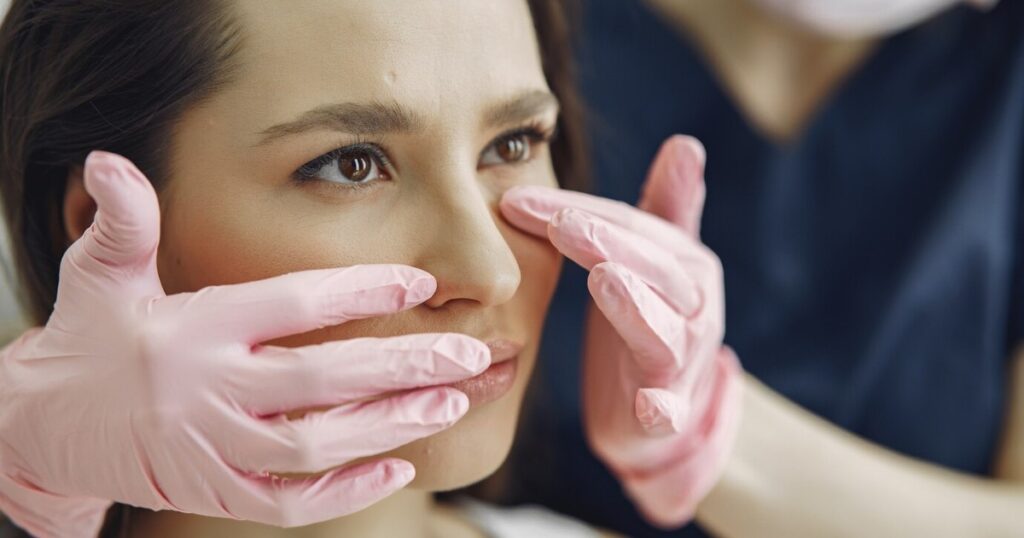
Yes, you can reshape your nose with Rhinoplasty. It can alter the shape of the nose by modifying the bone, cartilage, and soft tissues. The surgeon can change the size, width, projection, curvature, proportions, symmetry, and other attributes to improve appearance.
- Reduces the size of a large nose
- Reshapes the bridge of the nose
- Narrows the width of the nostrils
- Changes the angle of the nose tip
- Corrects a deviated septum
- Improves breathing
- Enhances facial symmetry and balance
- Increases self-confidence
Is rhinoplasty painful?
Rhinoplasty surgery is usually not painful due to anaesthesia, but moderate discomfort and nasal congestion may occur afterwards.
Pain medication is prescribed to alleviate surgical pain, and swelling worsens in the first few days, but most discomfort subsides within 1-2 weeks.
| Pain Management | Techniques |
| Prescription medication | Oral analgesics and anti-inflammatories. |
| Cold compresses | Reduce surgical swelling. |
| Rest and hydration | Support healing. |
| Saline spray | Clear nasal passages. |
| Arnica montana | Homoeopathic tablets to reduce bruising. |
What can I expect after rhinoplasty surgery?
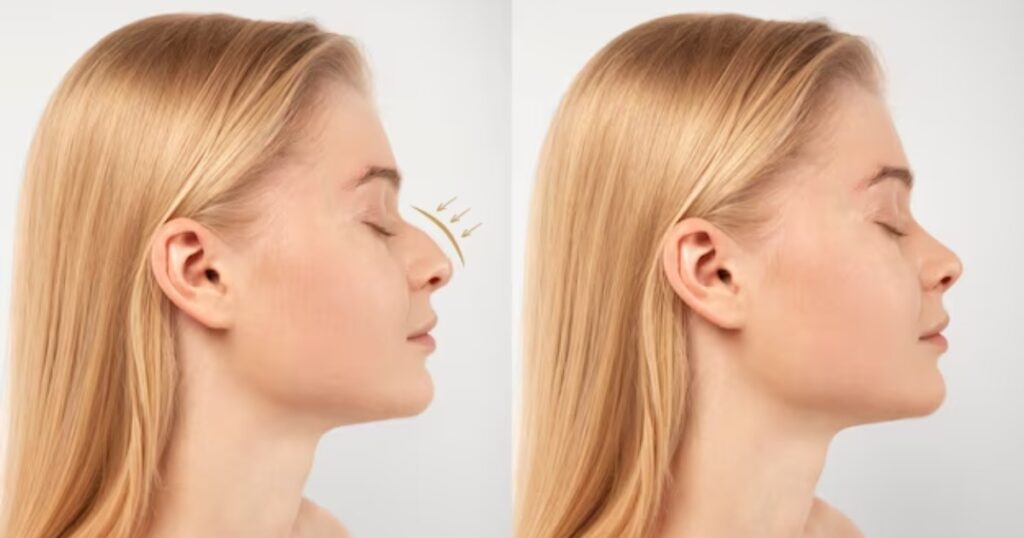
After you get a nose job, it’s normal to have swelling, some bruising, a stuffy nose, and a bit of discomfort, but medicine can help with this. You’ll wear a splint over your nose for about a week to keep it safe. The bruising usually goes away within two weeks, but the swelling gets better gradually over the next few months. Also, you’ll need to take it easy and limit your activities to make sure everything heals properly.
- The face is swollen with some bruising under the eyes
- The nose feels congested and blocked from swelling
- Splint remains for 5-7 days to stabilise new structures
- Discomfort is managed with prescribed pain medication
- Bruising fades after 1-2 weeks; swelling starts improving
- Strenuous activities must be restricted for 3-6 weeks
- Regular routine can be resumed after 2 weeks for most
- Healing and final shape emerge over 6-12 months
Rhinoplasty allows surgeons to transform nose shape and size through bone and cartilage modification. Consult an expert to see if this surgery is right for you.
Dr Tarek Bayazid is a highly experienced facial plastic surgeon in Dubai known for his natural rhinoplasty results. With over 15 years of experience, Dr. Tarek uses advanced techniques tailored to each patient. He is dedicated to patient safety and natural-looking outcomes.
Book a consultation with Dr Tarek to discuss your rhinoplasty options
